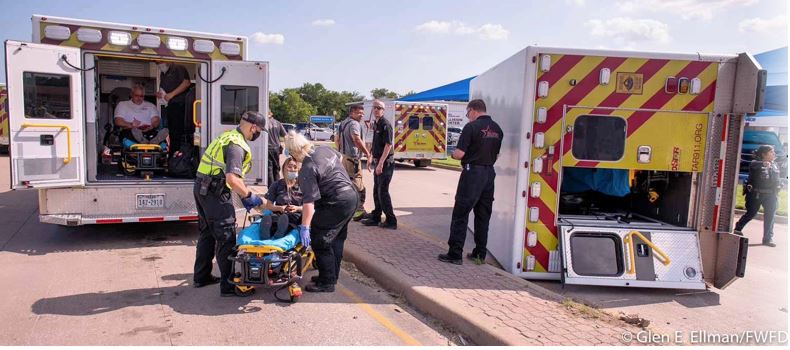Emergency Medical Service (EMS) vehicle operations using lights and siren pose a significant risk to both EMS practitioners and the public.
Nationally, in 2020, 14 people were killed in ambulance crashes that occurred during lights and siren operation, 9 of the 14 deaths were occupants in vehicles other than the ambulance. 12 people were killed in crashes involving fire trucks with lights and siren in operation, 10 of the 12 fatalities were to occupants in vehicles other than the fire truck[1].
In 2009, there were 1,579 ambulance crash injuries, and most EMS vehicle crashes occur when operating with lights and siren. Emergency medical vehicle crashes are more often at intersections, more often at traffic signals, and more often with multiple injuries, including 84% involving three or more people.
Lights and siren responses increases the chance of an EMS vehicle crash by 50% and almost triples the chance of crash during patient transport.
Over a dozen studies show that the average time saved with lights and siren response or transport ranges from 42 seconds to 3.8 minutes[2].
Since 2020, 11 MedStar personnel have been injured in ambulance crashes, all these crashes occurred while the vehicle was operating with lights and siren.
In February 2022, 14 national and international EMS and Fire associations published a joint statement encouraging agencies to reduce lights and siren responses. https://www.hmpgloballearningnetwork.com/site/emsworld/news/top-ems-groups-issue-joint-statement-ls-responses
To help make responses safer for the community, and our personnel, MedStar is participating with 50 other EMS agencies across the country in a quality improvement project to evaluate processes to reduce the number of calls we respond to using lights and siren, limiting those types of response to truly time-critical medical responses, such as heart attacks, serious breathing problems, and serious trauma.
Part of that evaluation is assessing public perception of lights and siren EMS vehicle operation, and your response to this quick survey is a crucial part of that evaluation.
We encourage our community members to take 3 minutes to answer a few questions regarding their perspectives on lights and siren EMS vehicle operation.
Here’s a link to the survey: https://forms.office.com/r/Dwk9JKjSVW
Or, scan this QR Code:
[1] https://injuryfacts.nsc.org/motor-vehicle/road-users/emergency-vehicles/
[2] https://www.ems.gov/pdf/Lights_and_Sirens_Use_by_EMS_May_2017.pdf







